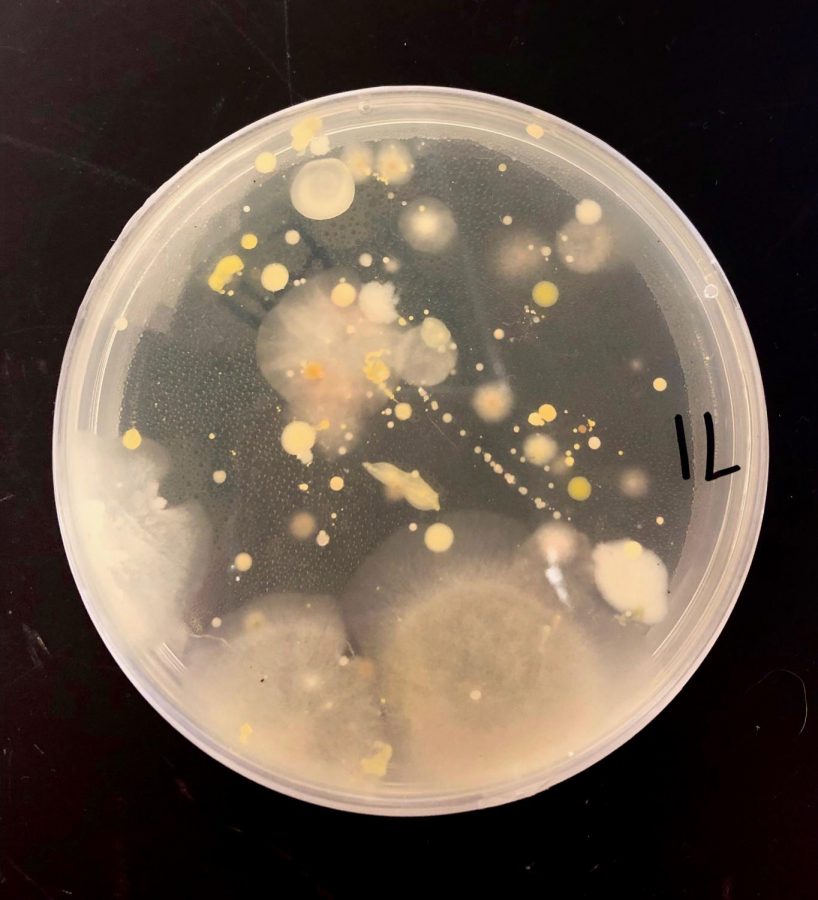How clean is our school?
Nathan Tidball and Lindsey Hartford
Pictured above is the Petri dish one weekend after Tidball and Hartford swabbed the keyboard. Some colonies have been identified as pink yeast and staphylococcus.
How clean do you think our school is? Just glancing around Wilsonville High School you could say we’re pretty clean and organized—but what about on the micro scale?
Recently the students of Mr. Schuster’s AP Biology class completed a lab of swabbing all around the school and testing for bacteria and the success rate of antimicrobial wipes. Many swabbed surfaces such as the handles to the bathrooms, the vending machine buttons, and even carpet vs. tile.
However, one group’s test stood out to a lot of the students. AP Biology students Nathan Tidball and Lindsey Hartford decided to swab one of the keyboards in the library. Typically, one would assume that there would be some bacteria due to the continued use of various students; yet, the findings were astounding. Their Petri dishes held tons of various bacteria that is a little worrisome.
The bacteria differs from groups such as pink yeast colonies to staphylococcus. That’s terrifying because many believe that staph and yeast are hard to contract and that they aren’t around us all of the time.
The findings of Tidball and Hartford’s experiment are helpful for two reasons—now we know how surrounded we are by bacteria, and we also know that we should be more aware of how well we clean and how much certain surfaces are used. Hopefully, now we use Lysol and Clorox wipes on surfaces that are known for not being the cleanest and also washing our hands at a higher frequency in the hopes of avoiding infections from yeast or staph.
This article isn’t meant to terrify anyone into germophobia, only to simply enlighten those living in the idea that our world contains little to no bacteria.









